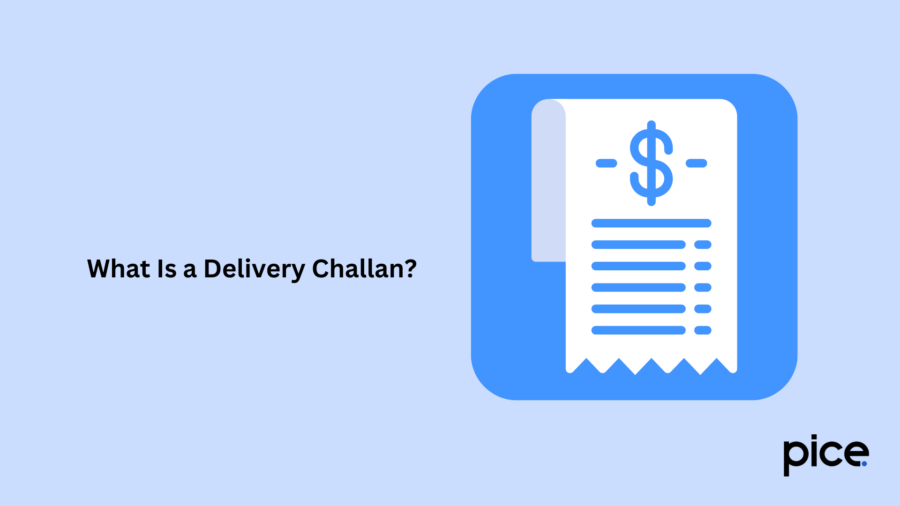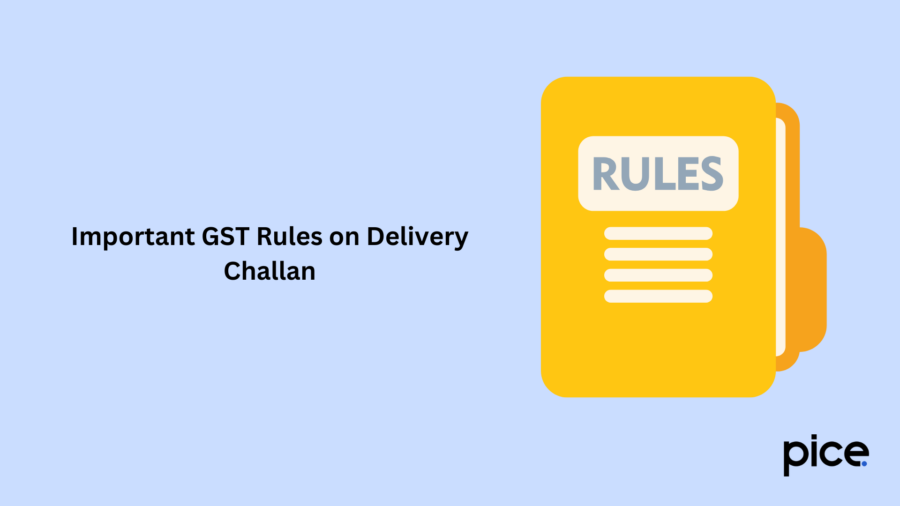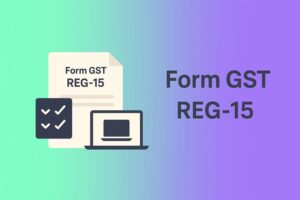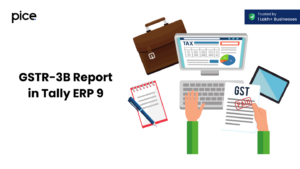Delivery Challan Format Under GST
- 22 Jan 25
- 9 mins

Delivery Challan Format Under GST
Key Takeaways
- Delivery challans ensure accurate tracking of goods during transportation.
- They are mandatory under GST for non-sale or specific movement of goods.
- Key details include serial numbers, consignee info, and GST-related data.
- Challans enhance billing efficiency and tax compliance.
- Proper use avoids regulatory issues and fosters business trust.
Shipping supplies while doing business can be tricky sometimes. Products may get lost, stolen, or spilled along the way, and thus documents like delivery challans can help track the contents of a specific consignment.
In this guide, let us delve into the process of generating a delivery challan and walk through its business requirements, especially during shipment procedures. Before that, we will start by discussing the meaning of delivery challan and delivery challan format under GST.
What Is a Delivery Challan?

A delivery challan denotes an official document that depicts information about the products contained in a specific shipment. A supplier issues this challan at the time of transporting supplies, which may or may not indicate a sale.
When Do We Issue a Delivery Challan?
A supplier of goods registered under GST is required to issue a delivery challan in the below-mentioned cases:
- Where goods are being transported either for sale or return purpose
- Where transportation of goods takes place for job work
An example of the above scenario can be taken as the transportation executed by a newspaper printing business.
- Where transportation of goods has happened for reasons other than a supply
An example of this can be the movement of commodities between warehouses for business operations.
- Where a raw materials supplier has no idea about the quantity of goods being delivered
For instance, when liquified gas is dispatched from a supplier's place, the quantity is potentially unknown.
- Where the transported goods are artworks that are meant to be sent to galleries
- Where goods are transported outside India for promotional, exhibition or fair shows
In this case, such items cannot be classified as ‘export’ or'supplies’ as their purpose is short-lived when sent abroad.
To sum up, whenever a seller is moving goods that are not intended for sale, they have to issue a delivery challan instead of a tax invoice.
Businesses Using Delivery Challans
The following businesses typically rely on delivery challans:
- Trading businesses or ventures that directly perform trading (particularly the FMCG businesses)
- Wholesale businesses (may include electronics products suppliers)
- Businesses that own multiple warehouses (may include clothing or textile hubs)
- Businesses that supply goods (either interstate or intrastate)
Important GST Rules on Delivery Challan

A delivery challan is a vital document that has to be mandatorily issued whenever goods are being sent from one place of supply to another. It is an important initiative that helps track supplied items and enforce GST regulations.
Key GST rules and considerations for delivery challans include
- The delivery challan format under GST must provide a set of basic information like the name, address, GSTIN of the supplier, name and contact details of the recipient, delivery challan serial number, HSN code of goods, purpose of movement (this can be a sale on approval, job work, exhibition), etc.
- If the value of transported goods exceeds ₹50,000, then a mandatory e-way bill has to be generated.
- Finally, a proper record of delivery challans has to be kept for at least six years as per Section 36 of the CGST Act.
Differences Between Tax Invoice and Delivery Challan
The proof of ownership and the GST implementation are the key points of difference between a tax invoice and a delivery challan. Besides this, here you can find some additional differences:
| GST Invoice | Delivery Challan |
| Invoices are more formal documents and are used to request payment after the end recipient has received their products. | A supplier issues this legal document while transporting goods. It acts as proof of delivery or movement of products within the logistics and supply chain. |
| GST invoices mark an actual sale transaction. | A delivery challan via email helps track the movement of products to and from the inventory when the manufacturer or supplier does not need to generate an invoice. |
| An issuer needs to define sales invoices with precise transaction-related information. These accurate invoices include essential details like the actual costs of each product which has been properly supplied to their destination. | Copies of delivery challans or dispatch slips, on the other hand, declare all the transportation details of product shipments, product quantity and sender and buyer’s information. |
| Invoices help to maintain business compliance regulations and transparency throughout business tasks. | Delivery slips assist companies in ensuring transparency throughout 'non-sale' transportation. |
Delivery Challan Format
Delivery challan templates have to be numbered serially and the alphanumeric code should not exceed sixteen characters. A suitable format must fulfil the following delivery challan requirements:
- Date and number
- Cosigner’s name, address and GSTIN, if the person is registered
- Unique Identity Number or GSTIN, name and address of the consignee, when the person is registered. Otherwise, the supplier must mention the place of supply, address and name of the recipient
- Item description must be delivered
- HSN code for the goods
- GST value of the supply
- Quantity of transported goods (one can skip this parameter if the exact quantity of the supply is not known)
- Applicable GST rate which must be divided between CGST, IGST and SGST
- Place of supply (for all inter-state goods transportation)
- Authorised signature
Additionally, you must issue a GST e-way bill if you are moving goods that can attract a GST value of more than ₹50,000.
Key Components of GST Delivery Challan
In the table below, we have briefly discussed each of the components that make up a delivery challan format under GST.
| Component | Description |
| Serial Number | All the challans should retain their unique serial numbers. This sequential numbering system allows to maintain accurate records and makes sure that the Council can easily track or identify the essential documents later on. |
| Consignee and Consignor Business Details | Delivery challans are supposed to carry all the relevant details about the consignee (recipient) and the consignor (supplier). It comprises their names, addresses and GSTINs. |
| Description of Items | When transporting goods, you need to provide detailed product descriptions by utilising the delivery challans. It covers vital data like the quantity, specific characteristics and GST value of the taxable materials that help with easy identification. |
| Quantity and Value of Products Delivered | If you know the exact quantity of deliverable goods, you must specify them. These product details are critical for both the recipient and the business owner for taxation purposes. |
| Authorised Person | Delivery challans must carry the digital signatures of the in-charge authority. Any person involved in the transportation or a representative of the consignor can sign the document. |
Advantages of Delivery Challan

Realising the benefits of using an ideal delivery challan for transporting goods is crucial. Apart from being a business compliance need, these challans ensure additional features associated with the transportation of goods.
- Seamless Billing Process
These documents enable quick payments. This is because the recipient receives a clear-cut documented record of transported goods. Thus, both parties can reconcile faster if there are any disputes involving the delivery process and proceed with the quick payment procedure.
- Building Authority of the Business
By using delivery challans, businesses can enhance trust in transactions. All they have to do is maintain well-documented records of the transportation of goods, which will establish a strong foundation of trust. Moreover, there will be less questioning from the regulatory authorities.
- Ensuring Tax Compliance for Job Work
Businesses that are involved in job work must use delivery or dispatch challans to maintain tax compliance. In this case, the document distinguishes between products dispatched for job work and those that are meant for regular transactions. This differentiation helps avoid common errors that can arise while calculating the total outstanding tax.
Conclusion
In summary, getting familiar with the delivery challan format under GST and its applicability is not only sufficient for self-employed individuals and business enterprise owners. There are various business billing requirements associated with this document with which you must be familiar to avoid unwanted penalties and fines.
If in doubt, you can take the help of business accounting software that will guide you on how you may maintain organised and accessible business transactions.
💡If you want to streamline your payment and make GST payments, consider using the PICE App. Explore the PICE App today and take your business to new heights.
 By
By 

















